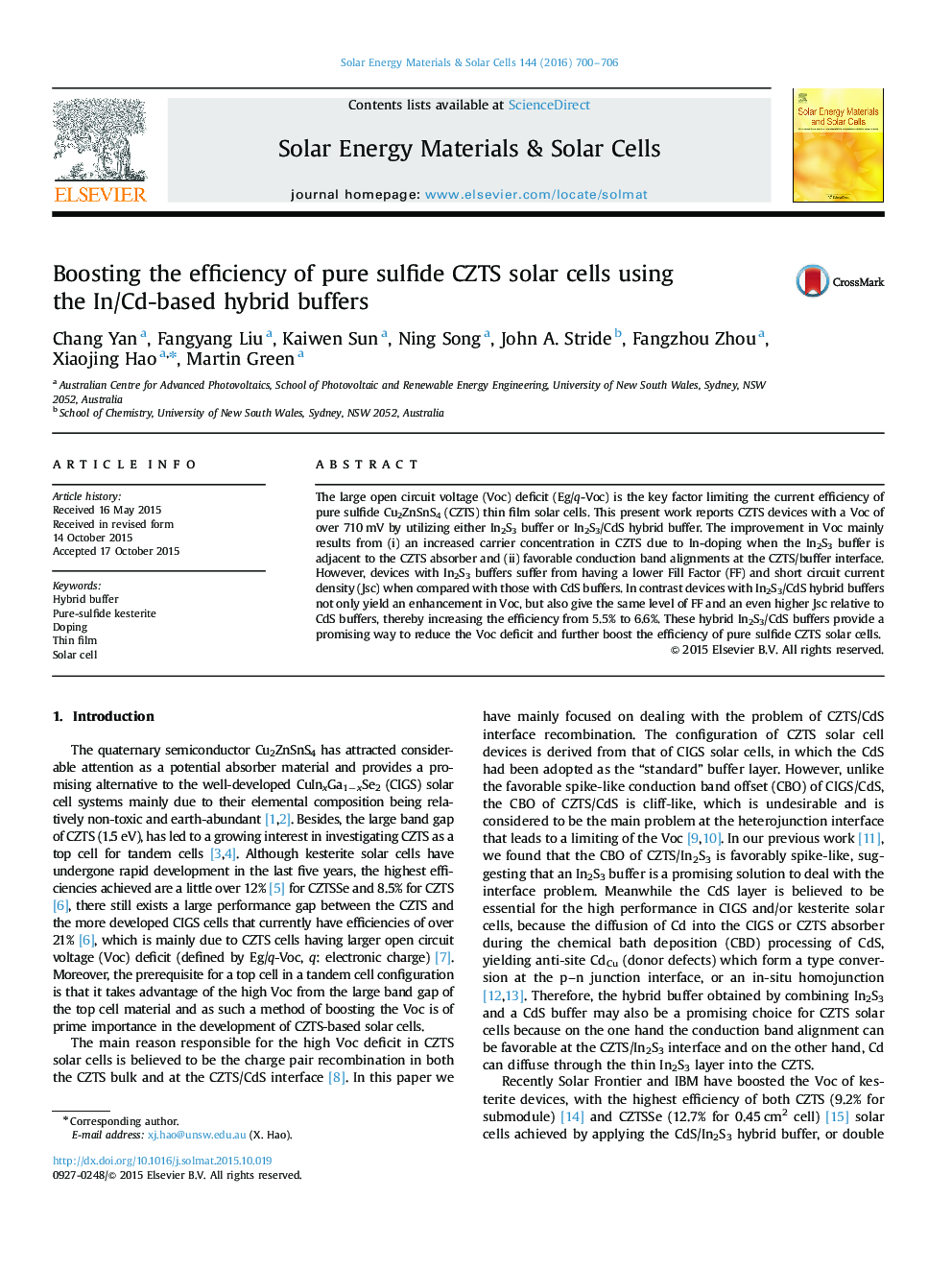| Article ID | Journal | Published Year | Pages | File Type |
|---|---|---|---|---|
| 6534984 | Solar Energy Materials and Solar Cells | 2016 | 7 Pages |
Abstract
The large open circuit voltage (Voc) deficit (Eg/q-Voc) is the key factor limiting the current efficiency of pure sulfide Cu2ZnSnS4 (CZTS) thin film solar cells. This present work reports CZTS devices with a Voc of over 710Â mV by utilizing either In2S3 buffer or In2S3/CdS hybrid buffer. The improvement in Voc mainly results from (i) an increased carrier concentration in CZTS due to In-doping when the In2S3 buffer is adjacent to the CZTS absorber and (ii) favorable conduction band alignments at the CZTS/buffer interface. However, devices with In2S3 buffers suffer from having a lower Fill Factor (FF) and short circuit current density (Jsc) when compared with those with CdS buffers. In contrast devices with In2S3/CdS hybrid buffers not only yield an enhancement in Voc, but also give the same level of FF and an even higher Jsc relative to CdS buffers, thereby increasing the efficiency from 5.5% to 6.6%. These hybrid In2S3/CdS buffers provide a promising way to reduce the Voc deficit and further boost the efficiency of pure sulfide CZTS solar cells.
Keywords
Related Topics
Physical Sciences and Engineering
Chemical Engineering
Catalysis
Authors
Chang Yan, Fangyang Liu, Kaiwen Sun, Ning Song, John A. Stride, Fangzhou Zhou, Xiaojing Hao, Martin Green,
